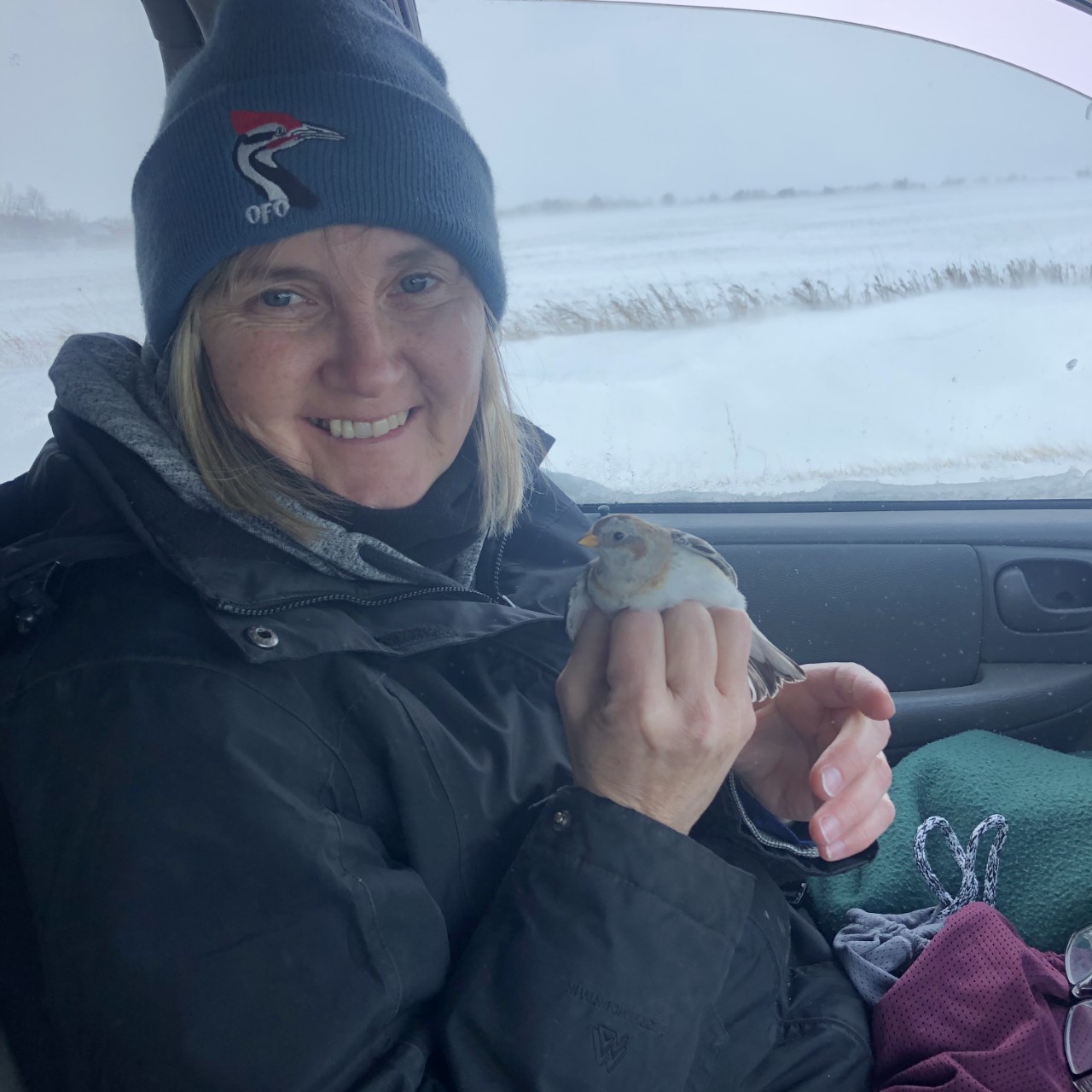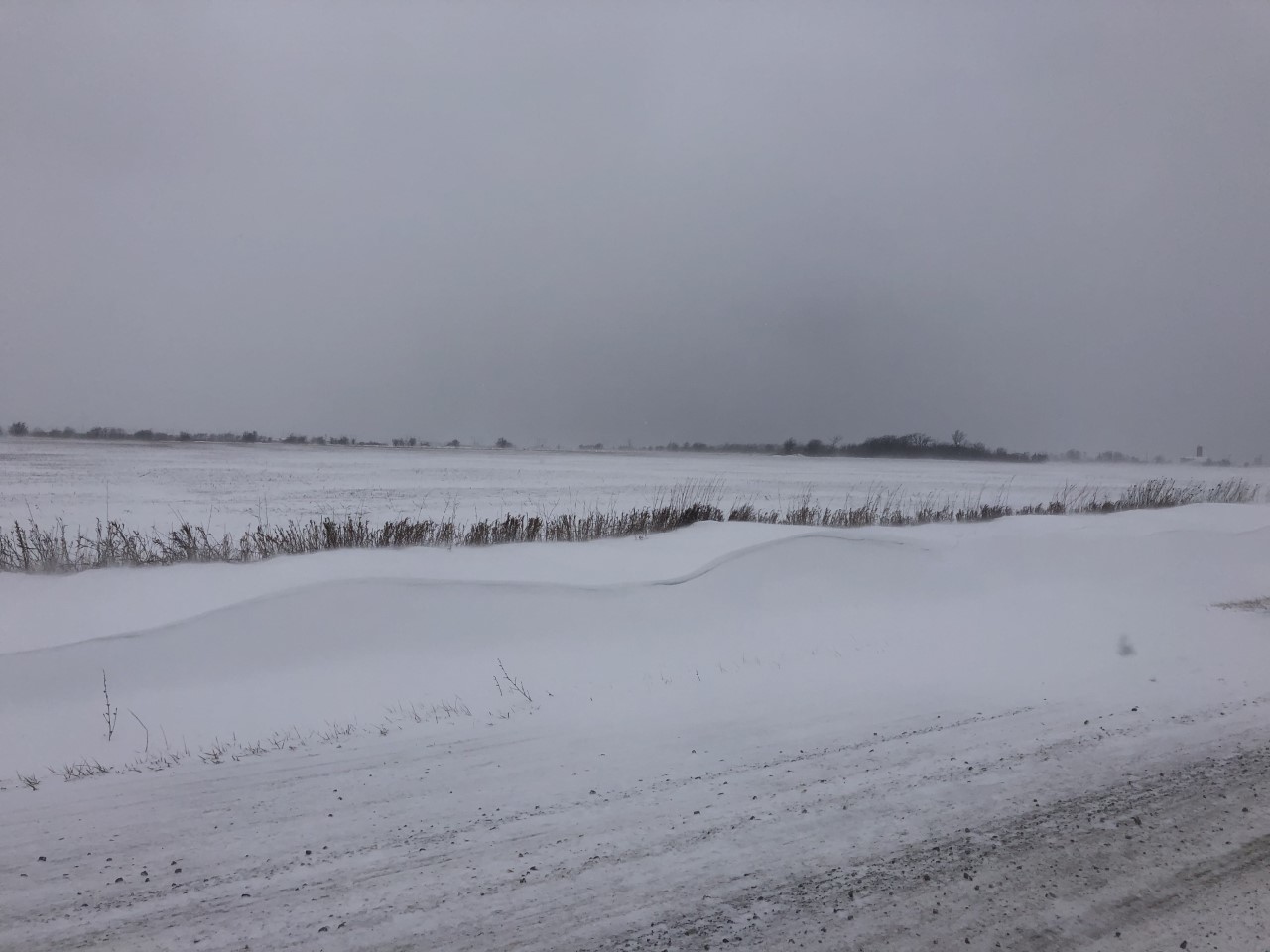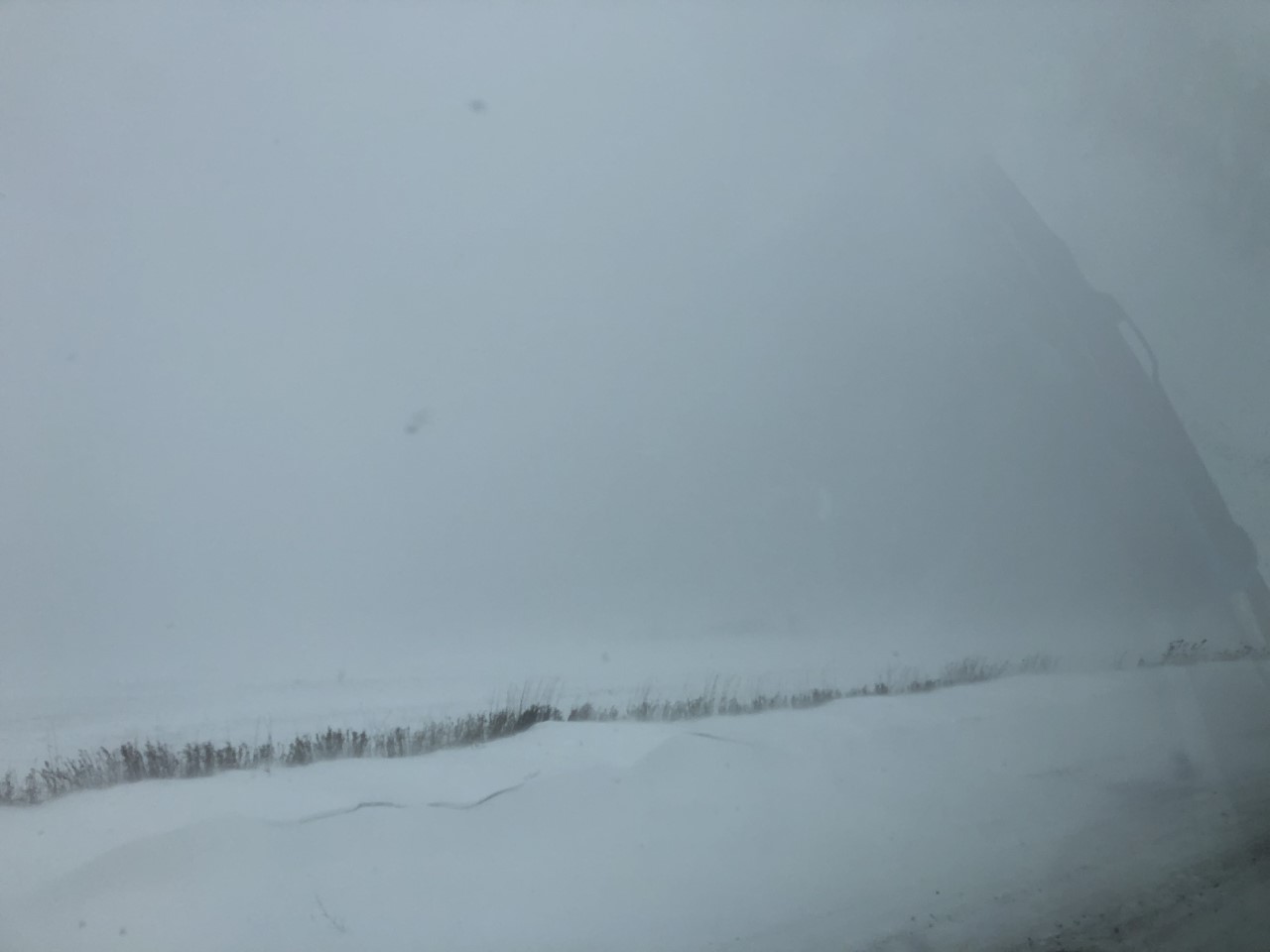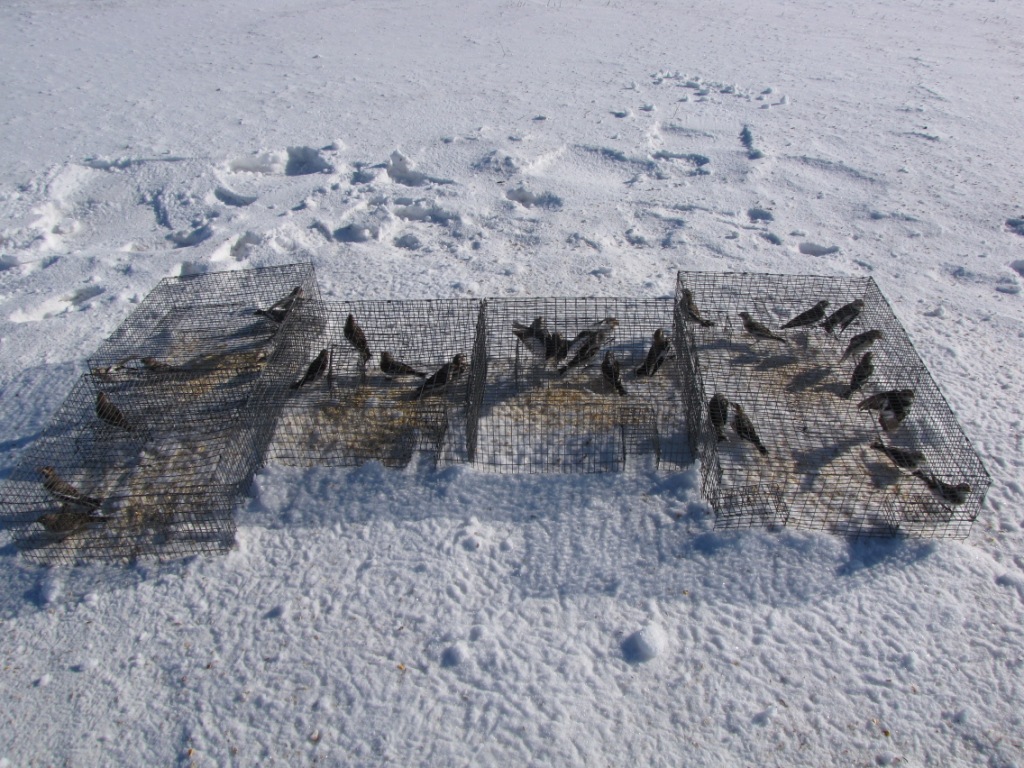
Not long back the headline in the local paper stated: “Fabulous February Weather.” This was in anticipation of a warm trend that would push temperatures up to 9 degrees for a couple of days. Now at a time when most people are voicing great concern about global warming and climate change I’m a little hard put to understand why this sort of weather would be classed as “fabulous”. I would think that “aberrant” would be much more fitting – these kinds of temperatures at this time of year can’t be a good thing.
But today we really did have “fabulous February weather”: -5 degrees, west winds blowing from 30 to over 50 km/hour; fresh snow – all combining for whiteout conditions. Also combining for Snow Bunting banding conditions!
And right on cue, a large flock (50+) of Snow Buntings was on the bait, joined by good numbers of Horned Larks. We put out the traps and in the space of 2 hours caught and banded 24 Snow Buntings and 2 Horned Larks. I should say that Nancy banded these, I just scribed. And I’m glad it worked out this way. Nancy hadn’t banded any this season and was beginning to show serious signs of bunting banding withdrawal: tremor, incoherence, hallucinations….the whole 9 yards. It’s amazing how quickly a Snow Bunting fix can eradicate these symptoms.

At first we had mostly blue skies and the snow from last night was blowing but things weren’t bad. A little later though it clouded over and fresh snow began to fall, resulting in severe whiteouts that reduced visibility to 10-15 meters. At that point we decided to pack it in, enhance the bait piles as the birds were going at them, and look forward to banding them tomorrow morning – they will be back as long as there’s fabulous February weather conditions and a predictable source of food (cut corn). [The key to successful bunting banding is to remove the traps with several hours of daylight left and touch up the bait piles so they can feed unhindered. They next morning they will be back to check out the site looking for more.]

A burning question that is always on my mind in bunting season is: how do they find the little piles of bait in the midst of 1000’s of square kilometers of agricultural fields? The weather has been benign throughout the Winter so far. Suddenly it gets fabulous/nasty and, presto!, buntings are on the bait piles within hours. How come?
We had one retrap this morning: # 2691-80354. This female (and we’re getting mostly females) was originally banded on February 11, 2015 (so is now at least in its 6th year) at the Duxbury Road site and was recaptured at the same site on March 4, 2019. So this older, experienced bird quite likely knew where the food would be. Could she have lead the others to the corn, maybe even expecting it to be there? I think this idea has real merit.

Quite regularly we recapture American Goldfinches that we’ve banded in other years. Many of them we only get in either early Spring or late Fall; they’re not around except during the migration period but….they return to the same feeders, a predictable food source, when they’re on the move.
Still, it’s a very small patch in a very large habitat system. Birds have phenomenal spatial memory. For 4 summers I worked at a field site on East Bay Island just off the NE coast of Southampton Island at the northern end of Hudson’s Bay. All the buntings were banded and colour-banded. Most returned year after year to the same territory they had vacated the year before. This island, above the tree line, is only 700 x 400 meters. Just a speck but they find it. But it’s a relatively big speck. A bait pile is less than a square meter…..One year we were Winter baiting/banding Snow Buntings in a large empty field just off Sandusk Rd., southeast of Hagersville. It began to snow heavily late one morning and didn’t let up for 24 hours. Once the snow ended and we got to the area all we could see was a massive white expanse with no features whatsoever (we didn’t use a stake in the ground to guide us like we do now); over 40 centimeters of snow had fallen. But we had absolutely NO problem finding the bait site; a large flock of Snow Buntings was sitting, patiently, directly over the old cut corn pile – we found it when we dug down out of curiousity. So spatial memory on a very fine scale is not a problem for these birds. I think there’s a VERY good chance that younger birds were cued to this site by the older female. I certainly like to think so…..
Rick
